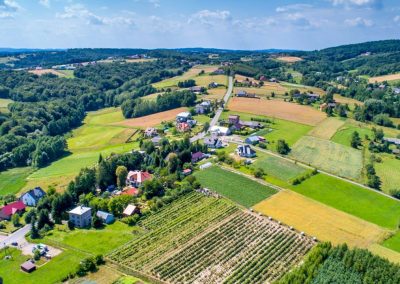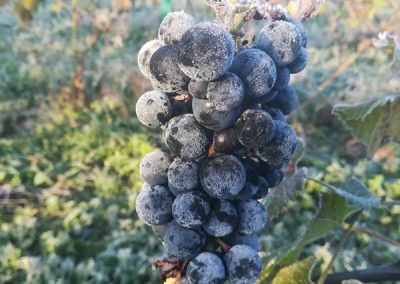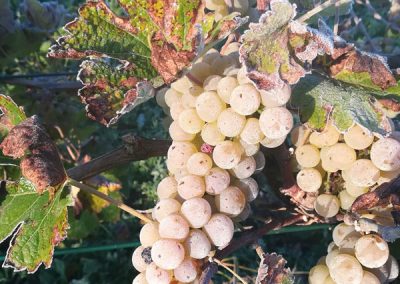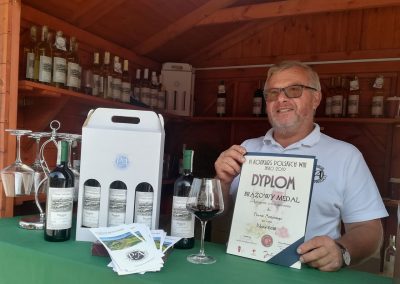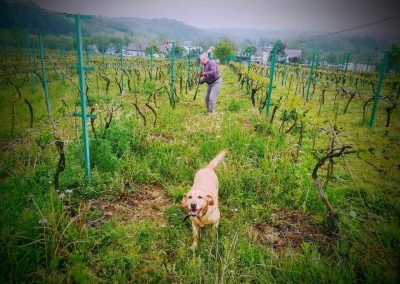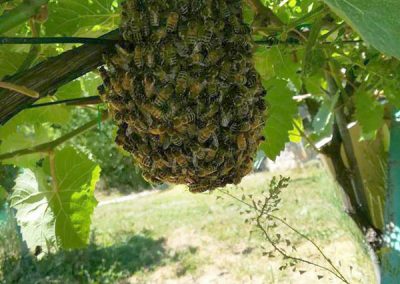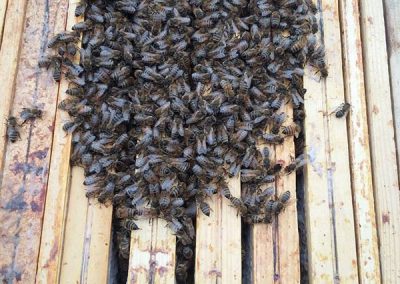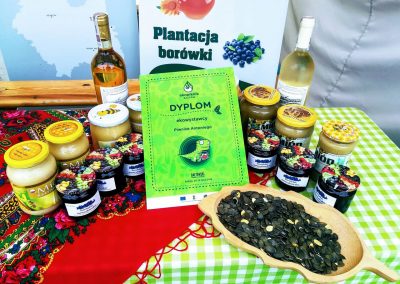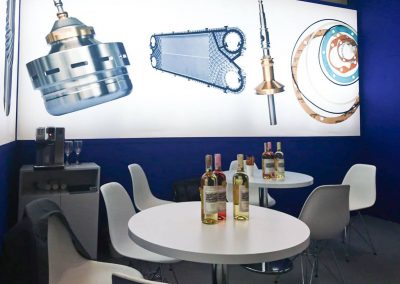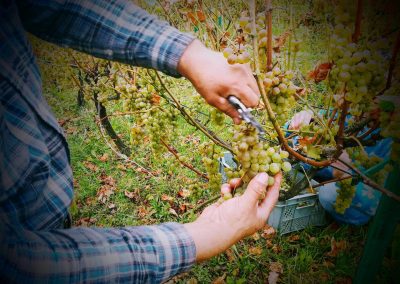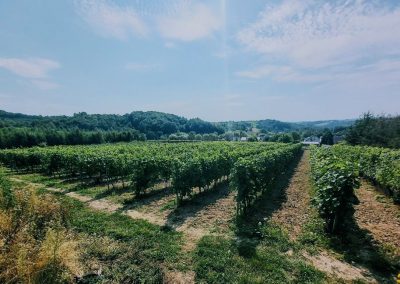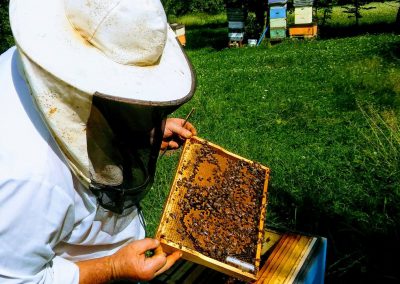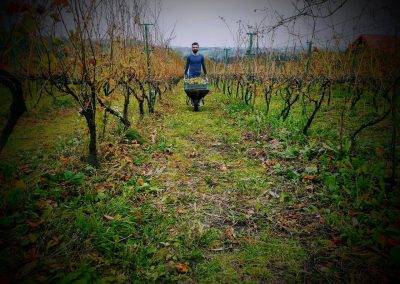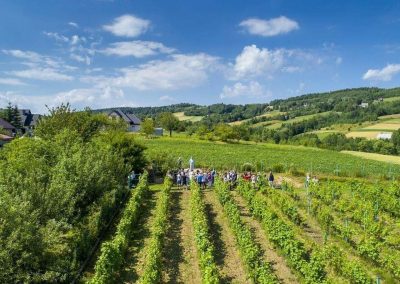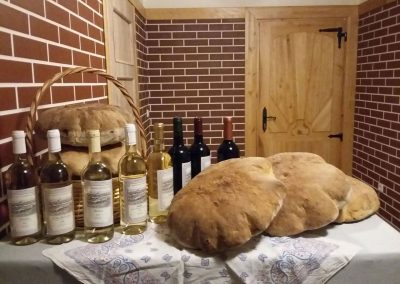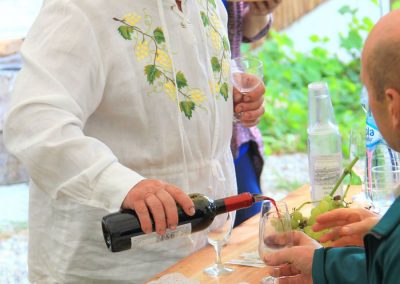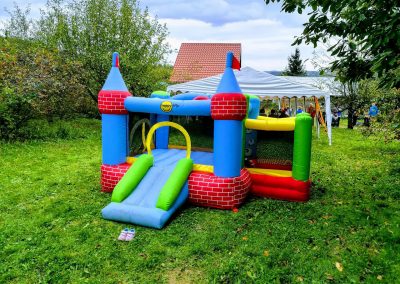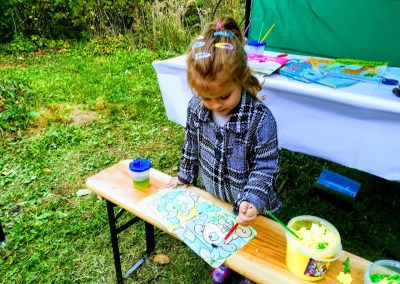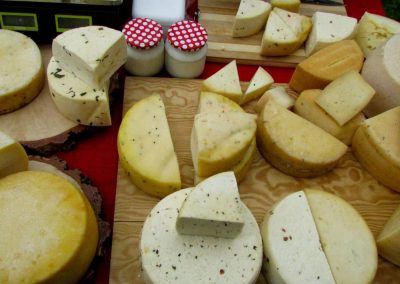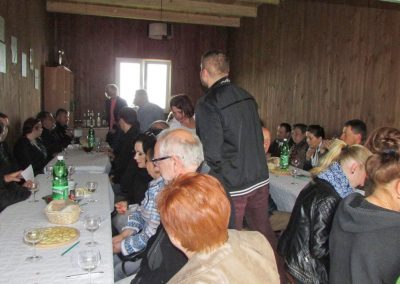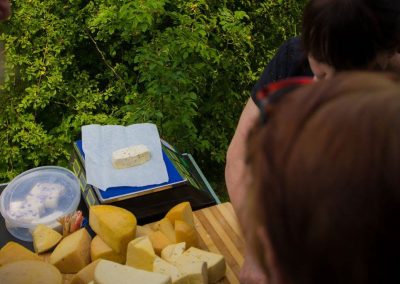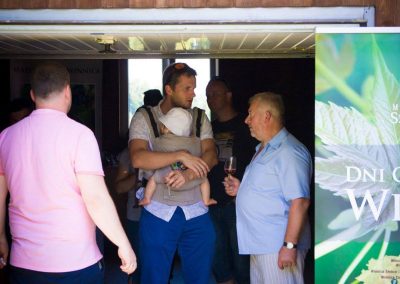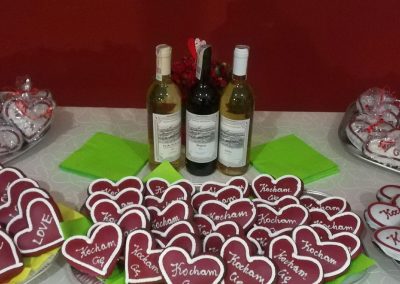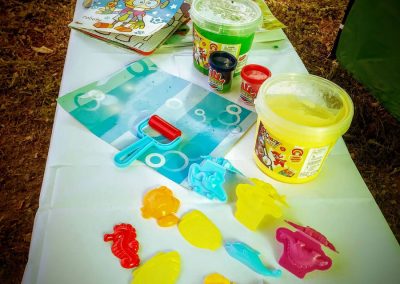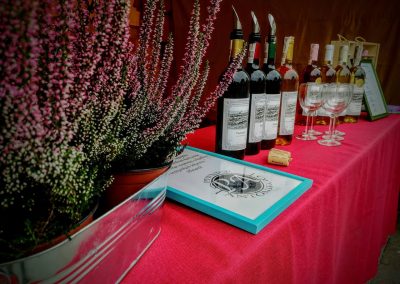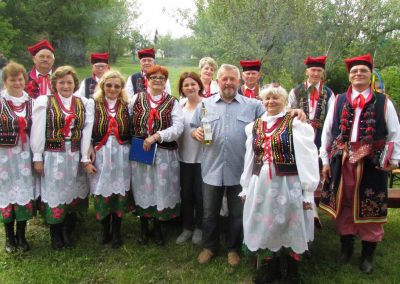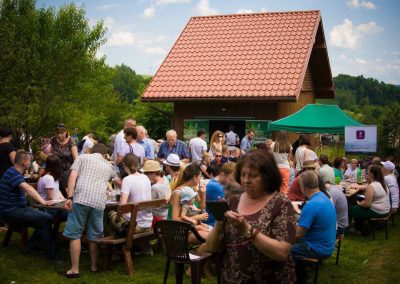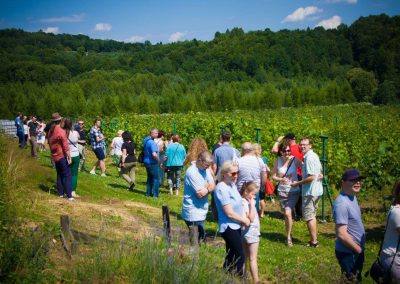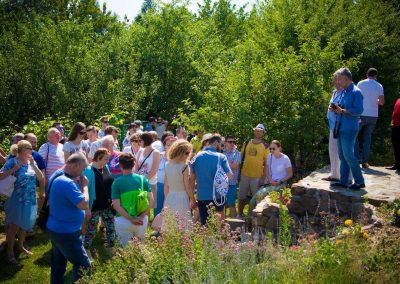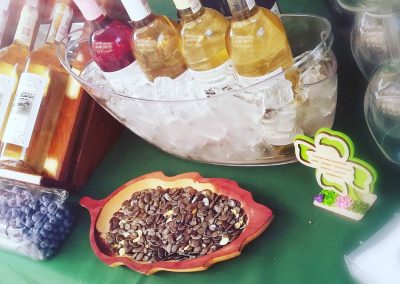Antoni’s Cellars
Vineyard
The vineyard is located in the buffer zone of the Ciężkowicki Park at an altitude of 250 meters. The slope of the east-south slope. From the north, the vineyard is protected against cold winds by Mount Kokocz (464 m above sea level). From the south, there is the Ciężkowice Foothill and the Brzanki Range, and to the east, all the way to Rymanów, the Strzyżowsko-Dynowskie Foothills. There is less rainfall here than in the surrounding area, because Kokocz from the north also effectively reflects storms. Well-drained soil, a typical Podkarpacie flysch, i.e. the layers of muddy slate located on sandstone. This causes a specific floral bouquet to be felt both in the nose and in the mouth.
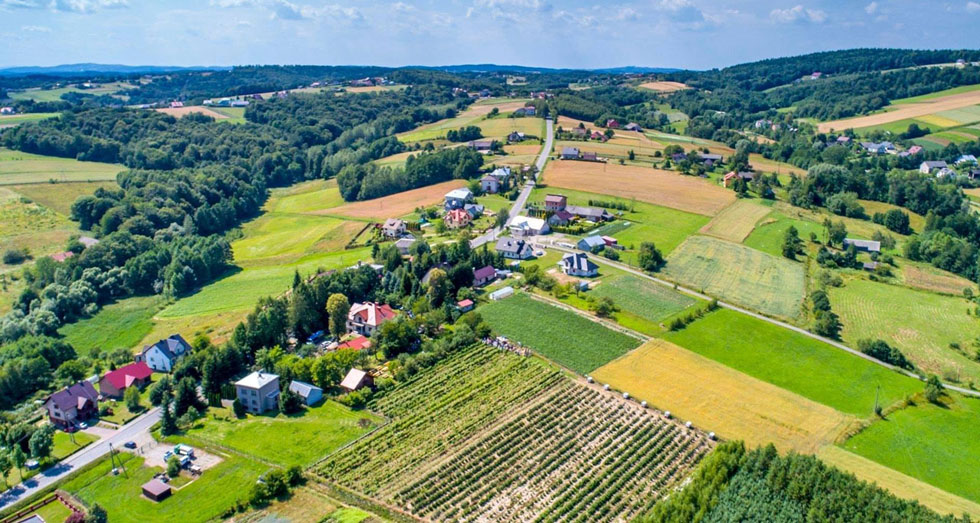

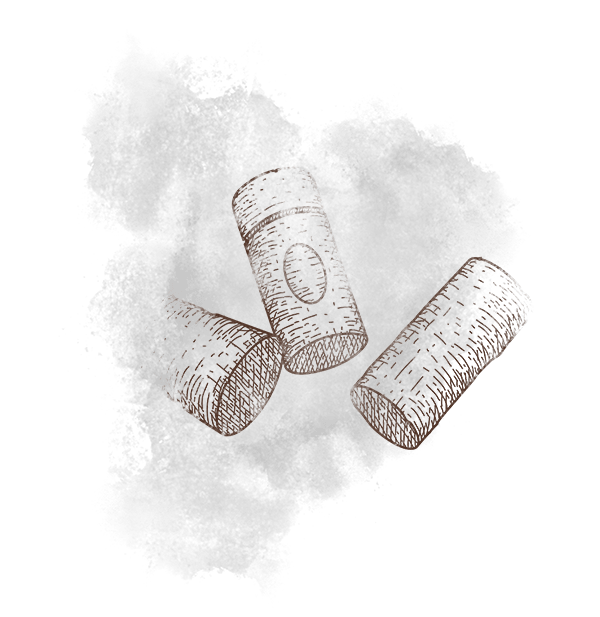
Contact
Antoni i Damian Marcinek
Wola Lubecka 15, gm. Ryglice,
tel: 608017274 / 606 908 404 ,
e-mail: antonimarcinek@wp.pl
www.piwniceantoniego.pl
https://www.facebook.com/PiwniceAntoniego
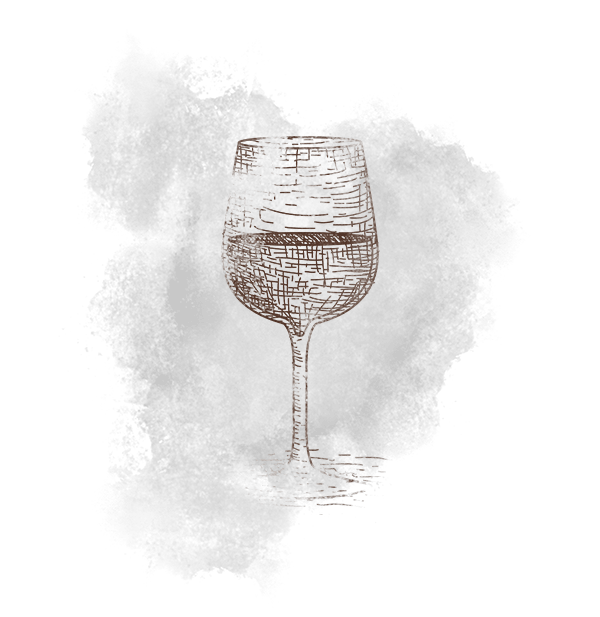
Year of establishment
vineyard planted in years 2002-2005. The first wines on sale in w 2005 year
Area
0,74 ha
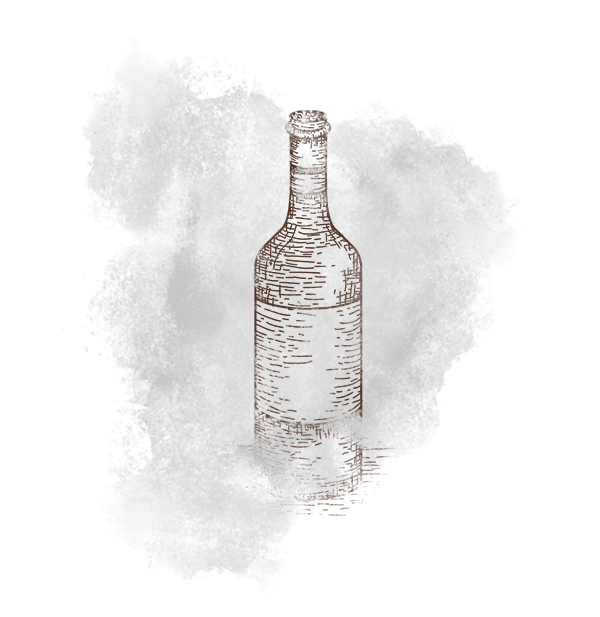
Cultivated varieties:
Red wines: Rondo, Regent, Cabernet Cortis, Leon Millot, Cascade, Monarch i Dunaj
White wines: Solaris, Bianca, Johanniter, Seyval Blanc oraz w mniejszych ilościach Kryształ, Aurora, Muscat Ottonel, Jutrzenka
Gallery
Our wines
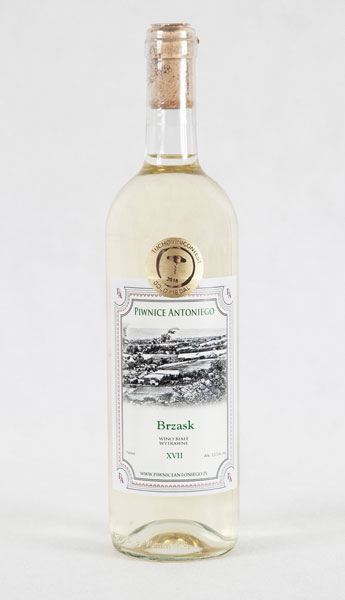
Brzask
Dry white blend: Seyval Blanc, Johanniter, Solaris (45:45:10).
During vinification, a short, several-hour maceration is used in order to extract flower bouquets. Then cold fermentation in steel vats at a temperature of up to 16 degrees C, quite long, lasting about 3 weeks. The wine is matured for a while on the sediment, then decayed and calm, it is matured in steel tanks until May-June.
Alcohol 13%. 6 g residual sugar, acidity 7 g.
Transparent, slightly straw-colored.
The aromas of green apple, gooseberry and grapefruit peel dominate.
In the mouth, the wine is very crisp (hence the name “Dawn”, which suggests tasting after waking up in the morning), with a pleasant, perceptible acidity.
Perfect for independent drinking, as an aperitif, also with fresh rennet cheeses and light poultry dishes.
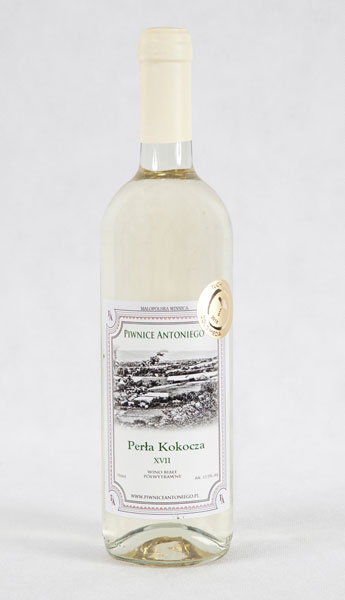
Perła Kokocza
A white, semi-dry blend: Bianca, Solaris, Muscat Ottonel (40:40:20).
Maceration up to 24 hours. Then a three-week cold fermentation in steel vats. The wine lies on the second sediment, at this time batonage is used, i.e. mixing wine with sediment. Finally, the wine matures in steel vats until May-June.
Alcohol 11.5%. 19 g residual sugar, acidity 6 g.
The color is more intense and stronger than Dawn, the straw is darker.
The nose is dominated by orange, apricot and peach marmalade.
In the mouth, wine is fatter, rounded and corpulent.
It pairs perfectly with fatty fish, fresh cheese, vegetable and poultry pates.
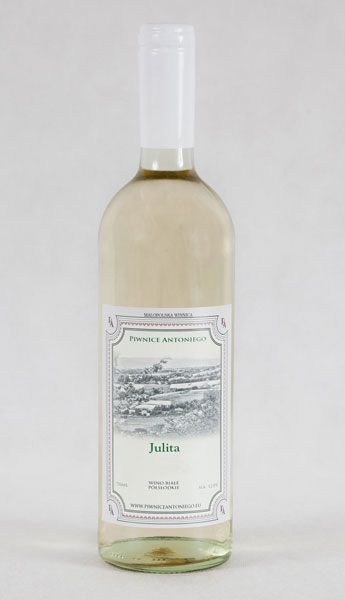
Julita
A white, semi-sweet blend: Kryształ, Aurora, Jutrzenka (33:33:33).
Longer maceration, up to 48 hours. Fermentation without cooling, i.e. at a natural cellar temperature (even up to 20 degrees), takes less than 9-14 days and takes place in steel vats. Finally, the wine matures for almost a year in steel vats.
Alcohol 11.5%. 30 g of residual sugar, acidity 6 g.
Intense, straw-colored color with golden reflections.
Distinct herbal and mint aromas.
Full and round in the mouth.
It goes well with desserts, fruit cakes, fruit and salads with a noticeable acidity.

Kaskada
Pink, semi-dry, varietal – 100% Cascade.
Maceration takes up to 24 hours to bring out the color. This is followed by a two-week cold fermentation in steel vats. Maturing also takes place in steel and lasts until June-July.
Alcohol 12.5%. 11 g residual sugar, acidity 7 g.
Intense pink color.
The aromas are mainly red, garden fruit, strawberries, wild strawberries and raspberries.
In the mouth, the wine is mild, with a noticeable, soft tannin and a light, joyful acidity.
Culinary versatile, it is worth trying with catfish and meat pates, perfectly drinkable on their own.

Nestor
Red dry blend: Rondo, Regent, Cabernet Cortis (40:40:20).
Maceration combined with fermentation lasts 14-16 days and takes place at ambient temperature. The set point is mixed twice every day. After pressing, 3-4 days of sedimentation, decanting and inoculation with malolactic fermentation bacteria. After its completion, the wine matures for a year in steel vats. Some oak chips are added.
Alcohol 12.5%. No residual sugar, acidity 5 g.
Dark red, ruby in color.
In the nose notes of cherries, blackberries, a little toasted blackthorn.
Mouth with noticeable, soft tannins, relatively low acidity.
The wine goes well with lightly made beef and fatter pork, such as pork knuckle.
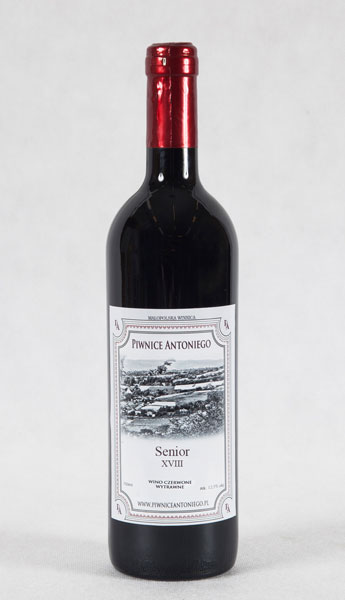
Senior
Red dry blend: Monarch, Dunaj, Leon Millot (50:10:40).
Maceration combined with fermentation lasts 14-16 days and takes place at ambient temperature. The set point is mixed twice every day. After pressing, 3-4 days of sedimentation, decanting and inoculation with malolactic fermentation bacteria. After its completion, the wine matures for a year in steel vats. No oak chips.
Alcohol 11.5%. Residual sugar barely present, acidity 6 g.
Dark red color, a clear tear on the glass.
Aromas of ripe, dark plum, sour cherry, and the floral notes of jasmine.
The wine can be paired with lighter meats, lightly cooked poultry or veal.

Danutie
A sweet blend of different white strains.
This original wine is made as a hobby, for your own purposes. It is made on the basis of honey from an apiary located in the vineyard and the remnants of bunches of various grape varieties, which are harvested only at the end of October. The grapes are macerated together with the stalks for 3-4 weeks. As a result, the wine takes on the character of an orange wine. Honey is added to the maceration, which drains all the tannins. The wine matures up to two years.
Very sweet wine, sugar depending on the year from 90 to 120 g, low acidity.
The nose has a whole range of honey fragrances, ripe fruit and herbal notes from the stalks.
Perfect for desserts, cakes or as an aperitif. In contrast, sharp, blue cheeses will work. It is also the perfect wine to end the day for two.
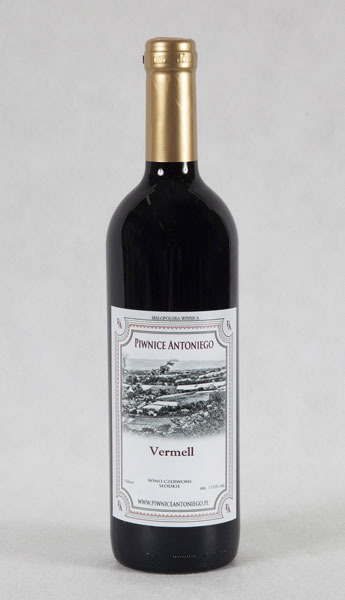
Vermell
A sweet blend of various red strains.
This original wine is also made as a hobby, for your own purposes. It is made on the basis of honey from an apiary located in the vineyard and the remnants of bunches of various grape varieties, which are harvested only at the end of October. The grapes are macerated for several months. Honeydew honey is added to the maceration. The wine matures up to two years.
Sweet wine, port-style, sugar depending on the year – maximum 90 g, low acidity.
Honey, ripe, exotic fruit and notes of pepper in the nose.
The wine pairs well with desserts, but also with spicy blue cheeses.
Tourist offer
It includes guided tours of the vineyard with an overview of the history of the vineyard and the grapevines grown, and commented wine tasting with boards of local cheeses and cold meats. The offer is available both for individuals and organized groups.
Price: price by individual arrangement
There is also a place for a fire and a platform from which you can see the entire vineyard.
Wine sales are available on site. In addition, the sale includes honeys from own apiary and pollen, as well as self-made white and red wine vinegars, made from grapes left over from maceration. Fixed meals are not available.
Events
Every year at the turn of May and June, the Opening of the Season at Winnica takes place. In 2021, it will be combined with honey harvesting.
At the turn of September and October, Winobranie takes place with a performance of regional folk groups, tasting of farm cheese, homemade cakes and bread.
In addition, during the holidays, an open group tasting is organized once a month.
Calendar of events



